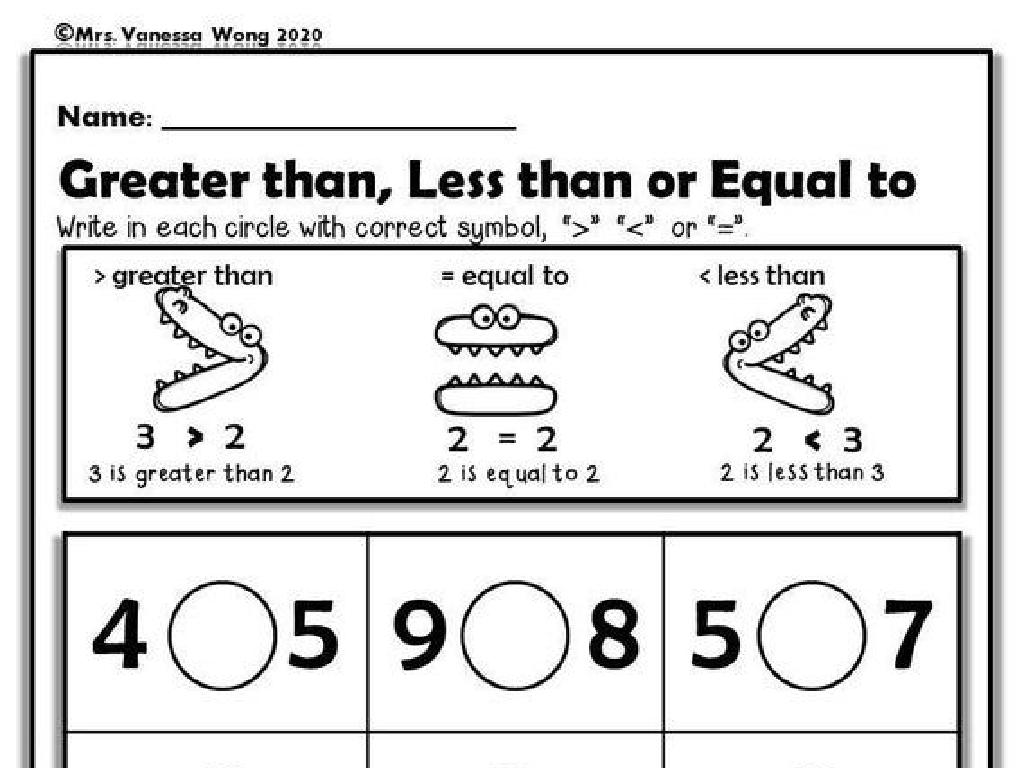Understanding Cells
Subject: Science
Grade: Sixth grade
Topic: Cells
Please LOG IN to download the presentation. Access is available to registered users only.
View More Content
Welcome to the World of Cells!
– Cells: Life’s Building Blocks
– Smallest unit of life, making up all living things.
– Cells in Living Organisms
– Every plant and animal is made up of millions of cells.
– Significance of Studying Cells
– Knowing about cells helps us understand body functions and health.
– Exploring Cell Functions
|
This slide introduces students to the fundamental concept of cells, which are the basic structural, functional, and biological units of all known living organisms. Emphasize that cells are the building blocks of life, and every living thing, from the smallest bacteria to the largest whale, is made up of cells. Discuss how understanding cells is crucial for us as it allows us to grasp how organisms grow, reproduce, and function. Moreover, knowledge of cells is the foundation for understanding more complex biological concepts and can lead to advancements in medicine and health. Encourage students to think about how diverse life forms are yet all share the commonality of being composed of cells. This will set the stage for exploring the various functions and types of cells in subsequent lessons.
Exploring the Building Blocks of Life: Cells
– Define a cell
– A cell is the basic unit of structure and function in living things.
– Cells: The smallest life units
– Diversity of cells
– Cells come in various shapes and sizes, with different functions.
– Comparing animal and plant cells
– Animal cells are round while plant cells have rigid walls.
|
This slide introduces the concept of cells as the fundamental unit of life. Begin by defining a cell and explaining that all living organisms are made up of these microscopic units. Emphasize that cells are the smallest form of life, capable of performing all life processes. Highlight the diversity of cells, noting that they can differ vastly in appearance and function. Draw attention to the key differences between animal and plant cells, such as the shape and the presence of a cell wall in plant cells. Use diagrams to visually compare and contrast these two types of cells. Encourage students to think about the variety of cells in their own bodies and the wider natural world.
Exploring Cell Theory
– Three core parts of cell theory
– Cell theory has three fundamental components.
– All life forms have cells
– From tiny bacteria to large whales, all organisms are cellular.
– Cells: Basic structure & function
– Cells are the building blocks of all living beings.
– Cells originate from existing cells
– New cells are created through the division of older cells.
|
This slide introduces the foundational concept of cell theory in biology. The cell theory is a crucial part of understanding living organisms and consists of three main ideas. First, it states that all living things are composed of cells, highlighting the universal presence of cells in life. Second, it emphasizes that cells are the basic units of structure and function in all organisms, meaning that cells form the body’s structure and carry out its functions. Lastly, the theory explains that all cells come from pre-existing cells, which is essential for understanding reproduction and growth in living organisms. Encourage students to think of examples of organisms made up of cells and discuss how cells function in their own bodies. This will help them grasp the importance of cells in life.
Exploring the Building Blocks of Life: Cell Parts
– Cell membrane, cytoplasm, and nucleus
– The cell membrane is a protective barrier, cytoplasm holds components, and the nucleus is the control center.
– Functions of mitochondria and ribosomes
– Mitochondria power the cell, ribosomes make proteins.
– Organelles unique to plant cells
– Chloroplasts and cell walls are unique to plant cells, aiding in photosynthesis and structure.
– Comparing animal and plant cells
|
This slide introduces students to the fundamental parts of a cell and their functions. The cell membrane acts as a gatekeeper, the cytoplasm is a jelly-like substance where cell parts reside, and the nucleus contains genetic material directing cell activities. Mitochondria are the cell’s powerhouses, and ribosomes are the protein factories. Highlight the differences between animal and plant cells, such as the presence of chloroplasts and cell walls in plant cells. Use diagrams to visually compare and contrast these cell types. Encourage students to think about how each part contributes to the cell’s survival and function.
Microscopic Exploration of Cells
– Using microscopes to see cells
– Microscopes magnify cells, making them visible.
– Exploring types of microscopes
– Light and electron microscopes are commonly used.
– Observing cells in a lab setting
– We’ll look at plant/animal cells under the microscope.
|
This slide introduces students to the fascinating world of cells through the lens of a microscope. Begin by explaining how microscopes work to magnify tiny cells to a size where we can observe their structure. Discuss the different types of microscopes, such as light microscopes for general classroom use and electron microscopes for more advanced observations. Emphasize the practical skills of preparing and observing cell slides in the lab. Provide examples of what students might see, such as the difference between plant and animal cells, and encourage them to be curious and ask questions during the lab activity.
Cell Functions: The Building Blocks of Life
– Cells absorb nutrients and expel waste
– Like a tiny factory, cells take in food and water and remove unwanted substances.
– Cells contribute to growth and repair
– When you get a cut, cells multiply to heal the skin.
– Understanding cell division: Mitosis
– Mitosis creates identical cells for growth and maintenance.
– Understanding cell division: Meiosis
– Meiosis produces unique sex cells for reproduction.
|
This slide aims to explain the essential functions of cells in a way that is understandable for sixth graders. Begin by discussing how cells work similarly to a tiny factory, taking in nutrients to generate energy and getting rid of waste to stay healthy. Highlight the role of cells in the body’s growth and their critical function in repairing damage, such as healing a cut. Explain cell division, starting with mitosis, which is the process by which the body grows and replaces cells. Then, introduce meiosis, which is used to create sperm and egg cells for reproduction. Use diagrams to illustrate the stages of mitosis and meiosis, and provide examples that are relatable to the students’ everyday experiences.
Class Activity: Cell Model Creation
– Create your own cell model
– Label each cell part
– Use labels like ‘nucleus’, ‘mitochondria’, ‘cell membrane’, etc.
– Share and explain your model
– Present your model to the class
– Discuss the function of each part
– Explain what each part does, like how the nucleus is the control center
|
In this hands-on activity, students will create their own cell models using various craft materials to reinforce their understanding of cell structure and function. Provide a variety of materials such as clay, beads, yarn, and construction paper. Students should identify and label key parts of the cell, such as the nucleus, mitochondria, and cell membrane. After completing their models, each student will share with the class and explain the function of each labeled part. This activity will help students visualize and better understand the components of a cell and their roles. Possible variations of the activity could include creating either a plant or animal cell, working individually or in groups, and using different materials to represent cell organelles.






